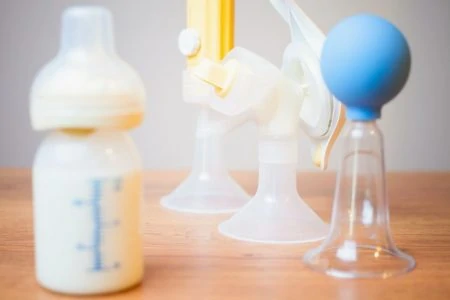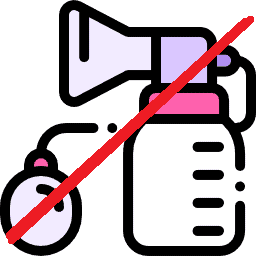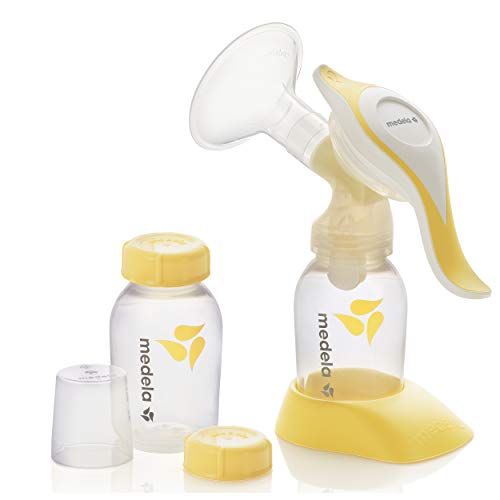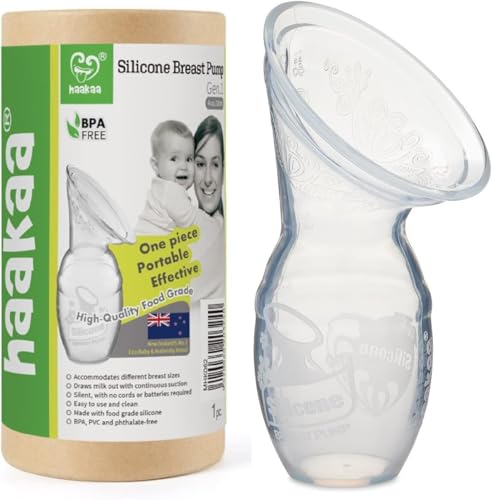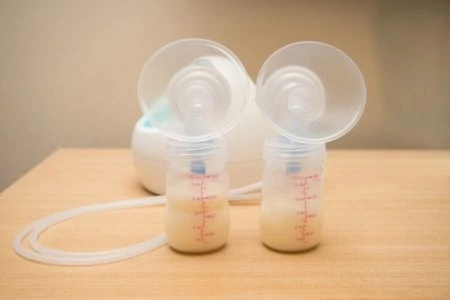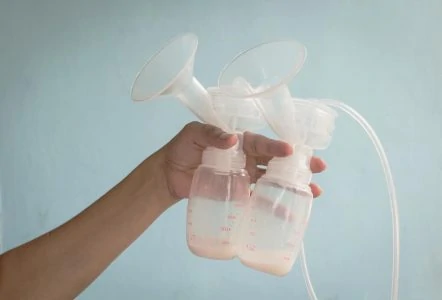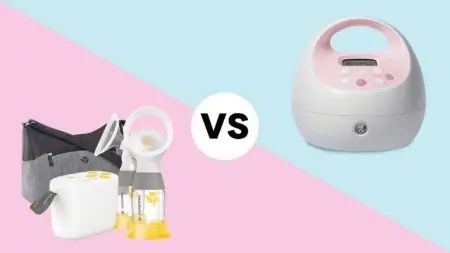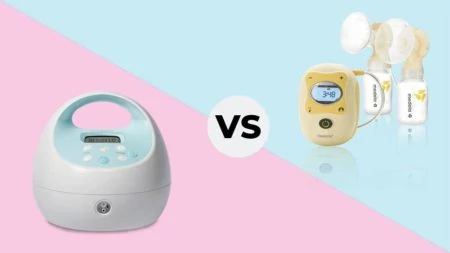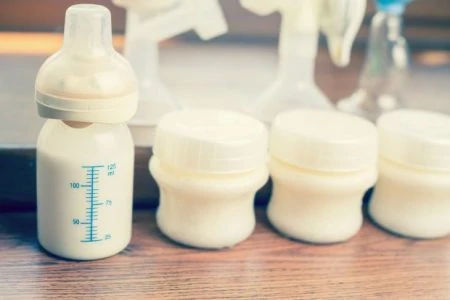Let’s be real: electric breast pumps are efficient, but they aren’t exactly stealthy. Between the “whoosh-whoosh” noise and the hunt for a power outlet, sometimes you just need something simpler. That is where a trusty manual pump saves the day.
Whether you need a silent backup for date night, a travel-friendly option for road trips, or just relief from occasional engorgement, manual pumps are a diaper bag essential. We dug into the details, analyzed customer feedback, and tested the market’s leading options to bring you the best manual breast pumps available right now.
- Lightweight and compact
- More affordable than other pumps
- Comfortable to hold
- Inexpensive
- Easy to clean, less stress
- Comfortable against breast
Who Should Choose a Manual Pump?
If you plan to pump exclusively or multiple times a day, your hands will thank you for choosing an electric breast pump. However, manual pumps are the MVP for moms who only need to express milk once a day or occasionally (1). They are also fantastic backups for when the power goes out or your electric pump’s battery dies mid-session.
Advantages of Manual Pumps
Disadvantages of Manual Pumps
Types of Manual Breast Pumps
Manual pumps are simple, but they generally fall into two distinct categories:
Levered Pumps
These look like the classic breast pump image: a funnel (flange) attached to a bottle with a squeeze handle on top. You pump the lever to create suction. High-quality models often feature “2-phase” handles; a short side to stimulate milk flow and a longer side for deep expression. These are best for actively emptying the breast.
Silicone “Milk Catchers”
These are single-piece silicone units that use continuous suction. You simply squeeze the base, suction it to your breast, and let physics do the rest. They are passive; you don’t have to keep squeezing. These are ideal for catching the “letdown” on one breast while your baby nurses on the other.
How to Choose a Manual Breast Pump
Product Reviews
We evaluated comfort, efficiency, and ease of cleaning to bring you these top 5 manual breast pumps.
Medela Harmony Manual Breast Pump
Best Manual Breast Pump for Low Milk Supply
The Medela Harmony is a favorite among hospital-grade pump users because it utilizes similar “2-Phase Expression” technology in a manual format. It comes with a 24mm PersonalFit Flex breast shield, a 5-ounce bottle, and a stand to prevent spills.
The genius here is the swivel handle. The short end mimics the rapid sucking of a hungry baby to trigger letdown. Once the milk flows, you switch to the long handle for slower, deeper extraction. This mimics natural nursing better than single-mode pumps.
The handle also swivels, allowing you to find the most comfortable hand position so you aren’t stuck at an awkward angle. It is efficient, fairly gentle, and integrates seamlessly if you already use Medela bottles.
Pros
- Quiet operation: Perfect for nighttime pumping sessions.
- Dual-mode handle: Switch between stimulation and expression easily.
- Ergonomic: The swivel handle helps reduce hand fatigue.
Cons
- O-ring durability: The tiny O-ring can wear out or get lost, killing suction.
- Top-heavy: Can tip over easily if not placed in its stand immediately.
Our Ratings
Lansinoh Manual Breast Pump
Best Manual Breast Pump for Working Moms
If comfort is your main concern, the Lansinoh manual pump is a strong contender thanks to its ComfortFit flanges. Unlike hard plastic shields, these have a soft, flexible silicone rim that creates a better seal and feels gentler against the skin.
Like the Medela, it offers two modes: stimulation and expression. The “Easy Express” handle is designed to reduce hand strain, making it a solid choice for moms who need to pump at work or on the go.
It pumps directly into Lansinoh wide-neck bottles, and the package usually includes a specialized nipple so you can feed baby immediately after pumping. It’s simple to disassemble, making the post-work cleanup session quick and painless.
Pros
- ComfortFit Flanges: Soft silicone edges improve seal and comfort.
- Value: Generally more affordable than other premium brands.
- Versatile: Compatible with Lansinoh’s storage bottles and bags.
Cons
- Suction strength: Some users find it slightly weaker than the Medela.
- Compatibility: Only fits wide-neck bottles, not standard narrow ones.
Our Ratings
Philips Avent Manual Comfort Breast Pump
Best Manual Breast Pump for Everyday Use
The Philips Avent Comfort pump stands out for its unique design that allows milk to flow directly from your breast into the bottle, even when you are sitting up straight. No more “hunchback” pumping posture required.
It features a soft, textured massage cushion intended to stimulate milk flow and mimic baby’s suckling. The pump is compact, lightweight, and incredibly easy for on-the-go moms to toss in a purse.
If you already use the popular Philips Avent Natural bottles, this pump attaches directly to them. It is dishwasher safe (top rack), which is a huge bonus for busy parents who hate scrubbing tiny parts by hand.
Pros
- Upright pumping: Saves your back from strain.
- Massage cushion: Soft texture helps trigger letdown.
- Compact: Short and sturdy profile travels well.
Cons
- Squeaky: Can develop a squeak over time if not assembled perfectly.
- Bottle fit: Only works with wide-neck Avent bottles.
Our Ratings
Haakaa Silicone Manual Breast Pump
Best Breastmilk Catcher
The Haakaa is a cult favorite for a reason. It is a single piece of food-grade silicone with zero cords, batteries, or moving parts. You simply flip the flange back, squeeze the base, and attach it to your breast.
It works via continuous suction. While it won’t replace a lever pump for actively emptying a breast, it is magic for catching letdown on one side while you nurse your baby on the other. Many moms build a substantial freezer stash just using this “passive” method.
Cleaning is a breeze since there is nowhere for mold to hide. Just wash, sterilize, and it’s ready to go.
Pros
- Silent: Absolutely zero noise.
- Zero assembly: One single piece of silicone.
- Soft: Very gentle on sore nipples.
Cons
- Kick hazard: Easy for a squirmy baby to kick off your chest.
- Not for active pumping: Doesn’t actively extract milk like a lever pump.
Our Ratings
BumbleBee Manual Breast Pump
Best Manual Pump for Large Breasts
Similar in style to the Haakaa, the BumbleBee is a silicone milk catcher that comes with a few extra perks. It includes a pump stopper and a lid, which are essential for preventing tragic spills after you’ve collected your liquid gold.
It is made of soft, food-grade silicone and relies on natural suction to draw milk out. It is incredibly lightweight (0.16 ounces), making it unnoticeable in a handbag. The BumbleBee is often praised for being slightly softer and more pliable than competitors, which can be a plus for comfort.
It is an excellent, budget-friendly option for moms who want to save every drop without active effort.
Pros
- Accessories included: Comes with a lid and stopper.
- Budget-friendly: Very affordable option.
- Comfortable: Soft silicone adapts to breast shape.
Cons
- Measurement accuracy: Volume markings on the side are just estimates.
Our Ratings
How to Use a Manual Breast Pump
Using a manual pump is simple, but getting the technique right can maximize your output.
Here is the quick-start guide:
- Hygiene First: Always wash your hands before handling the pump or your breast.
- Positioning: Center the breast shield over your nipple. Ensure your nipple moves freely in the tunnel without rubbing the sides.
- Stimulation: Start with short, quick squeezes of the handle to mimic a baby’s initial flutter sucking. This triggers your letdown reflex.
- Expression: Once milk starts flowing, switch to longer, slower squeezes. Hold the handle down for a second or two on the squeeze to drain the breast effectively.
- Rotate: Pump one side for about 5 to 7 minutes (or until flow slows), then switch to the other. Repeat if necessary.
- Clean Up: Disassemble and wash parts in warm soapy water, then air dry completely.
Manual Breast Pump FAQs
The Bottom Line
Manual breast pumps are the unsung heroes of breastfeeding gear. They are cheap, quiet, and save you from being tethered to a wall outlet. While there is a slight learning curve to the hand rhythm, it quickly becomes second nature.
Even if you plan to use an electric pump primarily, having a manual one in your glovebox or diaper bag gives you peace of mind. Stick with it, experiment with the suction, and you will find a rhythm that works for you and your baby.
